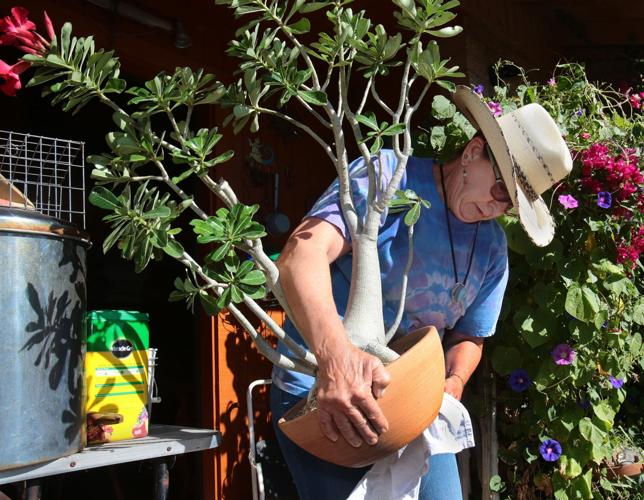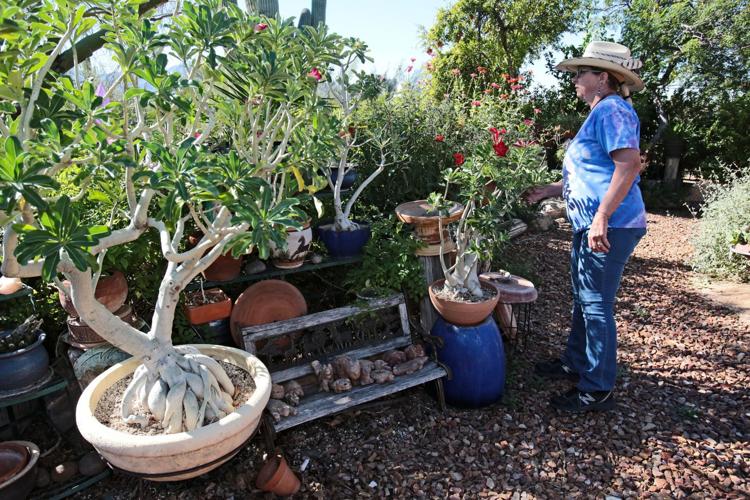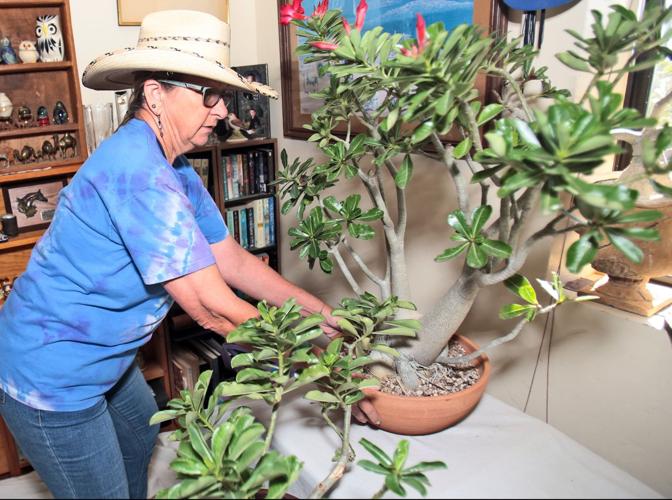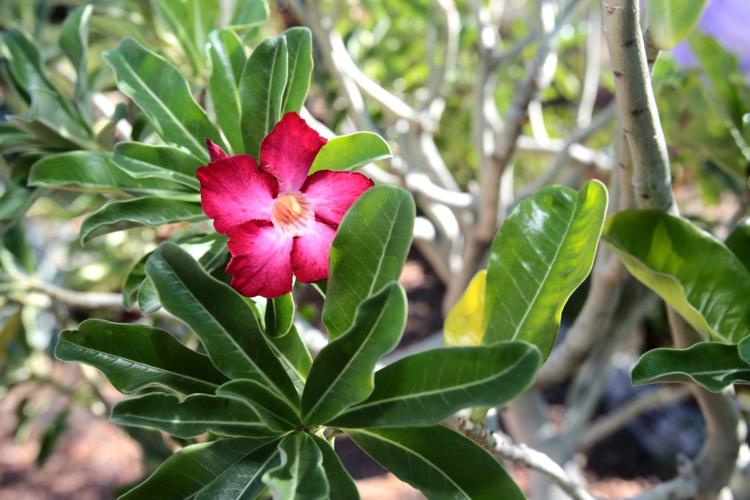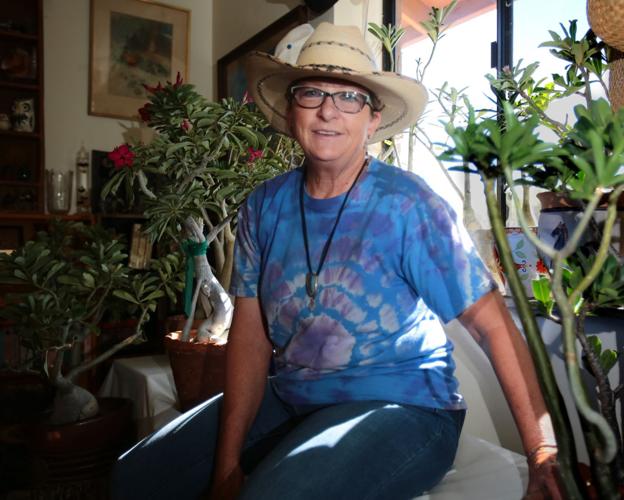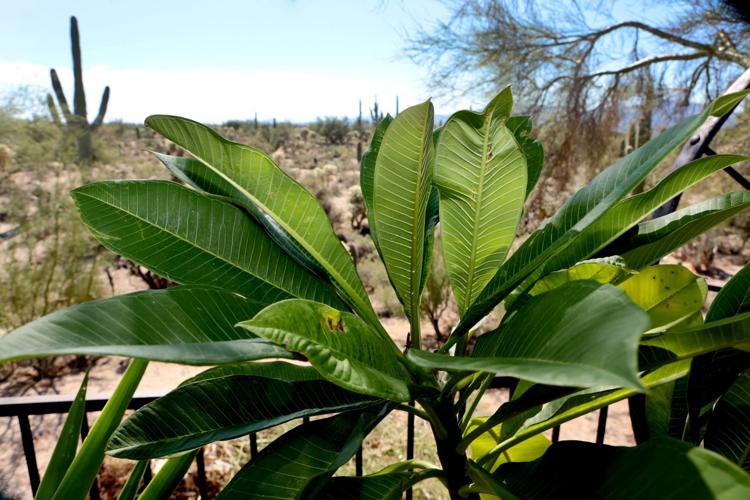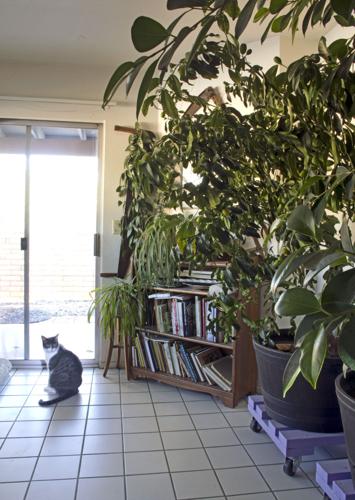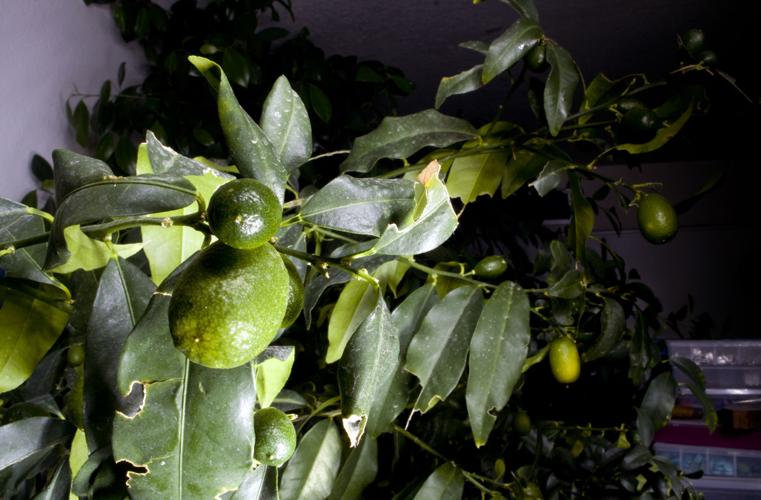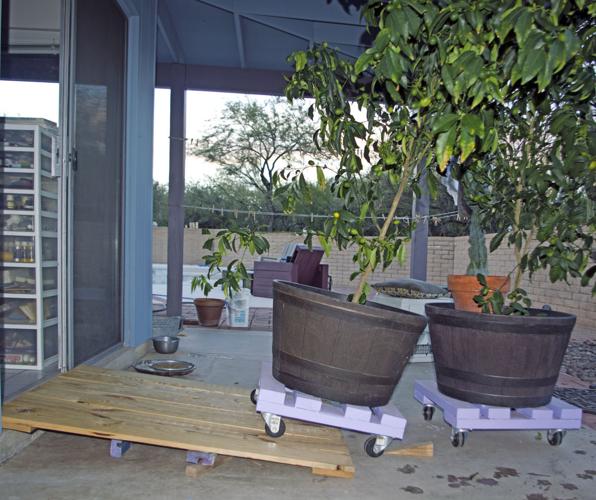Deb Montoya has been spending the last few weeks getting her spare room ready for winter guests: her nearly one dozen potted adeniums.
She’s not alone. For some gardeners, one of their autumn tasks is to move their cold-sensitive plants from outdoor spaces to the warmer climate in their homes.
Jorga Riggenbach does it with her kumquat trees, among other plants. Janice Marie Ward protects her prized plumeria this way.
WINTER RETREAT
Montoya, a Marana artist, brings her adeniums, also called desert roses, into the house to protect her collection.
“I keep an eye on the weather,” Montoya says. “If it’s consistently 50 at night and we get a threat of rain, I’ll bring them in. The greatest danger (to the plant) is that it’s too wet and too cold because the root will rot.”
Before the move, Montoya prepares her south-facing spare room that is used as a library and display space for collectibles.
Montoya puts plastic on the floor to catch the leaves that will fall as the plants go dormant.
She moves in stands for the smaller pots and a trunk, which is reserved for the 4-foot-tall specimen. She uses a wheelbarrow to haul that one into the house.
The others are in small pots and shallow soil to keep them light enough to carry into the house.
The plants need only minimal water in their dormant stage. There’s little fuss. “I just close the door and that’s their room,” Montoya says.
In spring, the plants go back out when the nighttime temperature is consistently 45 degrees. Montoya keeps them in the shade for a few days as they get used to their summer digs.
SHELTERED INVESTMENT
Ward has grown plumerias in Tucson for 15 years, bringing a bit of her former home of Hawaii to the desert.
But winters are not kind to the tropical plant and they need protection, she’s discovered.
“My last one was gorgeous and huge. I lost it in the freeze of 2011,” she says. “I’m not taking any more chances.”
When the night temperatures fall below 50 degrees, she wheels the 4-foot plant, which sits on a three-wheeled platform, into the house. It stays next to the sunny sliding-glass door in the couple’s bedroom until the weather warms in the spring.
Ward waits as long as possible for the move so that as many leaves as possible fall off outside as the plumeria goes dormant.
She also lets the soil dry out to make the pot lighter and easier to wheel around. Once inside, she lightly waters it through the winter.
“I don’t have to pamper it once it gets inside in the winter,” she says.
In spring, the plant gets deeply watered once it’s back outside to its shaded patio spot.
Ward says makes this seasonal effort “because it’s an expensive plant to lose and then have to buy again.”
INDOOR GARDEN
Riggenbach lives in the Tanque Verde area, where temperatures can get 10 degrees colder than in midtown.
She opts to wheel her two 7-foot-tall nagami kumquat trees into her breakfast nook because it’s easier than trying to cover them every time a freeze warning is issued.
She goes into action “usually when the weatherman says, ‘Cover your plants, we’re going to have a freeze,’” she says.
The plastic-potted plants already are on wheeled platforms and spend most of the year in full sun against one side of the house.
“I take them out in the open and wash them out,” she says, in order to knock off bugs and dust.
She puts a ramp to the patio door and pushes the plants into the breakfast nook. She covers the top of the pot with hardware cloth to keep the cats out of the soil. She waters as usual, using pie plates to capture water under the pots.
When the mesquite trees start leafing out in the spring, a traditional sign the frost and freeze threats are over, the plants go back out.
While indoors, the kumquat fruit that were green outside ripen to their bright orange. “I eat them directly off the tree,” she says.
“They are small and fabulous and so good, so it’s worth the effort.”


